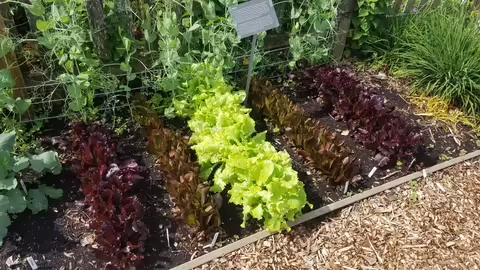It’s that time of year again – time to start planning for the vegetable gardening season. The explosion of enticing seed catalogs hitting my mailbox these days has started to get me in gear by dusting off all the tools, looking at our empty garden beds and dreaming of the growing season to come.
Despite all the excitement, it can sometimes be overwhelming when trying to figure out where to start planning. Before we know it, spring may be upon us, although Punxsutawney Phil may disagree!
When considering plans for the coming growing season, one of the first things I think of is my garden from last year. Crop rotation is an incredibly important concept and my plantings from last year will dictate some of what needs to happen this year.
By rotating groups of crops from season to season, you can avoid some pest and disease issues by disrupting lifecycles. In addition, it can improve soil health since each plant’s nutrient demands may differ, and rotating crops helps to minimize the chance that one particular soil constituent will be depleted.
In general, you should plan for a 3-year rotation, meaning that the same vegetable (or another vegetable from the same family) will not be grown in the same location more often than once every three years.
What You Can Plant
Vegetables can be grouped into several families as follows: Alliums (onion family), Solanaceous (tomatoes, peppers, eggplant, potatoes), Cucurbits (squash, cucumbers, melons), Brassicas (kale, cabbage, broccoli, Brussels sprout), root crops (carrots, beets) and Legumes (beans, peas). If you use cover crops in your garden rotation, you can add one more category to the list.
Planning a perfect rotation can sometimes seem difficult to orchestrate, especially if you don’t regularly plant all the families listed above or you have a smaller garden space. However, it’s no need to stress. As with most things in gardening, it just never seems to work out perfectly. At the very least, a simple rotation can go a long way, even if it’s only a one or two-year cycle.
Are My Old Seeds Viable?
Once I have penciled in my rotation for the year, all those seed packets from last year, or even years before, come to mind. I tend to have quite a few hanging around because I just can’t stand to throw away seeds. Partially because they can be useful and partially because they are a nice record of what varieties were planted in years past. However, I always have to wonder which ones are still good?
Lots of factors weigh in on seed viability in storage, from storage conditions to the species or variety in question. Under average storage conditions, simply in a cool dry place, kept away from moisture, you can assume the storage life of many common vegetable seeds as follows:
Viable for one year in storage: beans, broccoli, carrots, corn, most herbs, leeks, lettuce, okra, pea, peppers, spinach.
Viable for two years in storage: beet, cabbage, cauliflower, cucumber, eggplant, kale, melons, pumpkin, radish, squash, swiss chard, tomato, turnip.
If in doubt, it never hurts to do a very basic germination test by simply placing a few seeds in a moist paper towel, placing it in a plastic bag with plenty of warmth and sunlight, and watching what happens for about 10 days. You can certainly get fancy and do things like calculating germination rate, but I think it best to keep it simple and typically base my decision on whether a majority of seeds sprout.
If you are still wondering after 10 days of observation and you have plenty of seeds left over, it’s pretty simple to just up the seeding rate and plan to thin the planting. In addition, this can help to use up those old seeds, so you won’t feel guilty tossing them.
When Should I Plant?
The final step in my early season planning is deciding how, when and where to plant seeds. Will you start your own indoors now or plan to buy starts at the nursery later? Some crops can be started outdoors from seed. Which ones and when do I start them?
To answer all your questions on timing, Illinois Extension has a wonderful guide titled, “When to Plant in Illinois”. The guide is free and accessible for download at: go.illinois.edu/WhenToPlantGuide.
